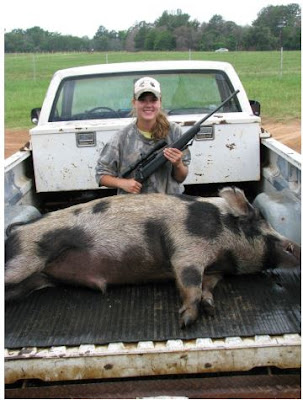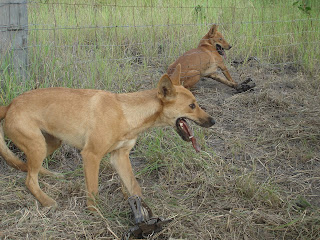| Peter Litchfield at Mundowdna station. He has started to breed dorper sheep because they are better able to fight off dingo attacks. Source: News Limited |
From: The Advertiser
August 26, 2013
DINGOES running rampant south of the dog fence are forcing graziers to switch from sheep to cattle and have sparked warnings the wool industry will become extinct without a new battleplan.
Strong rains since the breaking of the drought three years ago have led to a rebound in vegetation and the small animal population, sparking a surge in dingo breeding.
Agricultural industry leaders say the fence remains in good condition but a lack of adequate baiting and culling south of the barrier has led to an explosion in the dingo population.
Changing land uses also are being blamed for the rise as land once used for grazing is given over to conservation and mining and new owners have less incentive to bait and trap.
Reliable dingo population figures are not maintained, but graziers report major rises in predation and sightings.
They warn the wool industry faces "a crisis not seen before in its history".
The State Government has reported dingo sightings in the Riverland, West Coast and Eyre Peninsula and farmers have shot the animals at Quorn, Wakerie and Laura.
| Dingos south of the dog fence are forcing graziers to switch from sheep to cattle. Picture: Ben Allen |
One reported dingo sighting has been made at Burra, just 160kms from Adelaide CBD.
WoolProducers Australia President Geoff Power said dingoes in Queensland had led to a reduction in sheep from 18 million head to 3 million in the past 20 years.
Failure to immediately tackle the problem in SA could result in the same occurring here, he said.
"It's a very real threat. It's a problem that is getting worse every year," Mr Power said.
"The biggest solution is to get everybody doing the right thing.
Peter Litchfield beside the dog fence that borders his property.
"If we don't, we won't have an industry at all." |
"There are fewer workers on pastoral properties meaning there is less incentive and capacity to undertake high-level wild-dog control," the spokeswoman said.
Pastoralist Peter Litchfield from Mundowdna station, about 20km southeast of Marree, has switched from running merino sheep to dorpers, a South African breed, because they can better fight off dingo attacks.
"They're bigger, stronger, more intelligent and they have these instinctive characteristics that tell them to fight back," Mr Litchfield said.
"It's harder work for the dingo."
"Now we're only losing between 50 and 100 sheep a year and before we got the Dorpers it would have been in the thousands," he said.
"We still get a few injuries to the sheep, like we've always had but, again, they are more resistant to this, too."
Professional dogger Stuart Crombie regularly searches the 2200sq km station for dingoes that have made it through the dog fence, which borders the property to the north east.
"Last year we found about 50 dogs. So far this year we've found between 25 and 30," he said.
The Government and industry are separately working on new control policies.
The state's first Wild Dog Strategic Management Plan is being drafted by Biosecurity SA and expected to be released soon for consultation.
It is expected to recommend a new taskforce and increased funding for trappers.
The Government launched its Biteback strategy, aimed at increasing shooting and trapping, in 2009 when a surge in dingoes emerged as a growing threat to industry.
It says there has been a 49 per cent increase in landholder participation in control programs since Biteback was launched and a fourfold increase in the number of baits laid.
Legally, dingoes south of the fence are a pest and landholders are required to assist in their control.
The state and Federal governments spend $1 million annually on maintaining the dog fence, which stretches 5600kms from near Nundroo on the Eyre Peninsula to Dalby in Queensland.
Liberal MP Dan van Holst Pellekaan, whose electorate covers a vast area of the state's northeast, has called for stronger compliance measures for pastoral landholders and a dingo bounty.
He said landowners not meeting legal requirements to control dingo numbers should be made to explain why and forced to meet their responsibilities if they were failing.
"It's not often that you have the opportunity to see the start of such a significant problem but still have the opportunity to address it," Mr van Holst Pellekaan said.
"It would be a huge negative impact on primary production in the state if that opportunity is not taken."












.jpg)







